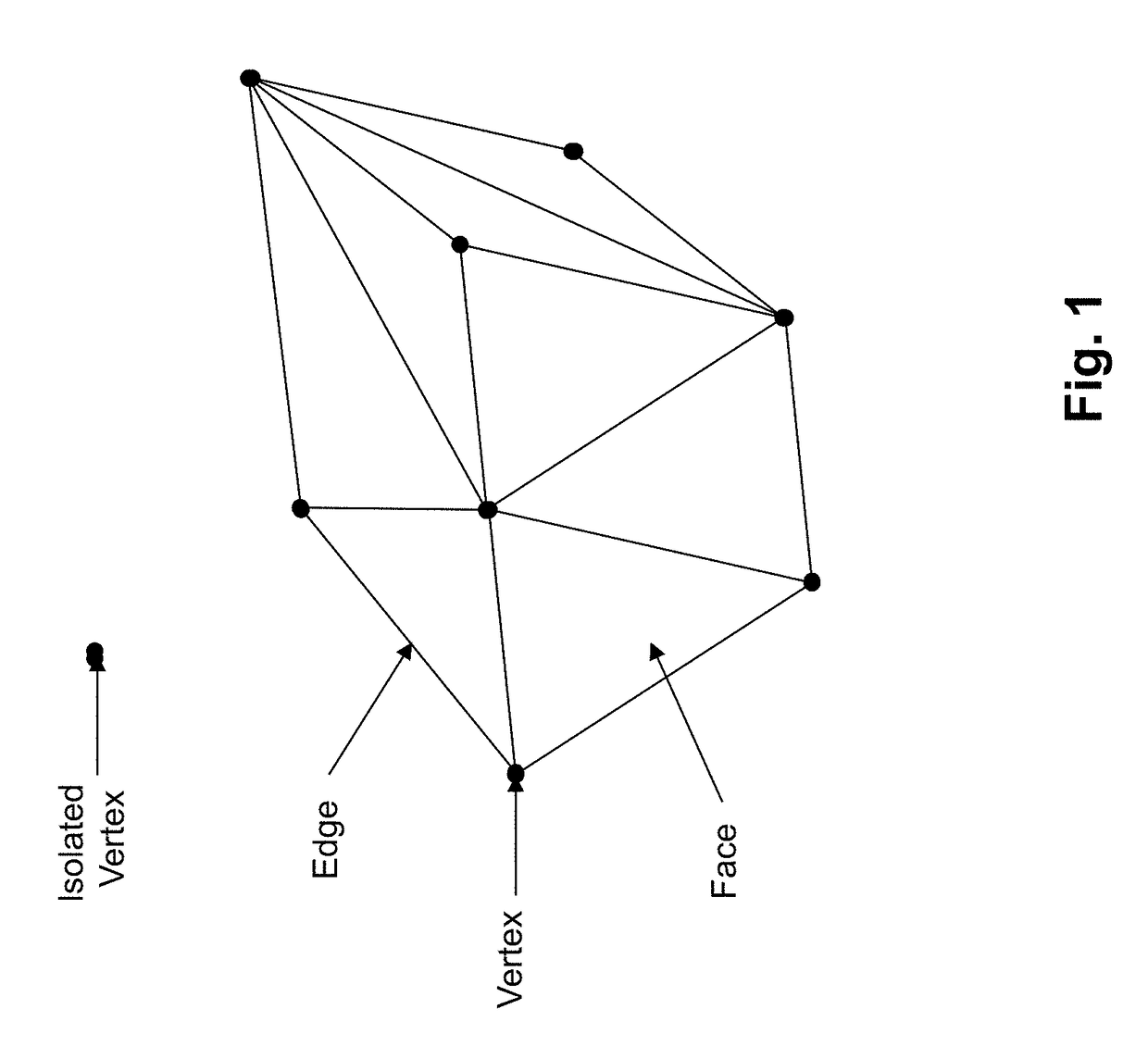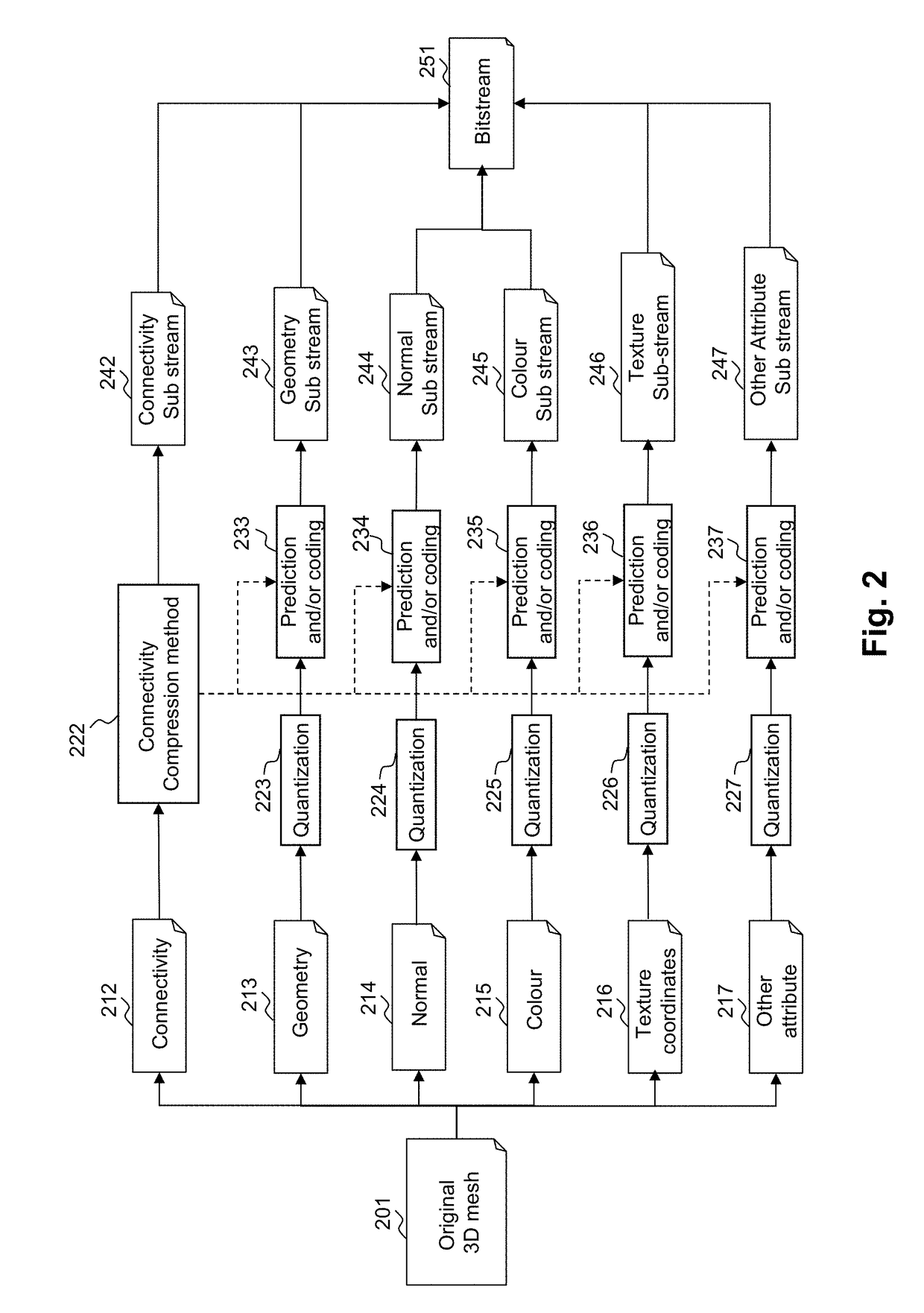Attribute mapping to encode and decode 3D models
a technology of attribute mapping and 3d model, applied in the field of attribute mapping to encode and decode 3d models, can solve the problem that known techniques do not take advantage of correlations between points or vertices in sufficient degr
- Summary
- Abstract
- Description
- Claims
- Application Information
AI Technical Summary
Benefits of technology
Problems solved by technology
Method used
Image
Examples
Embodiment Construction
[0197]The invention will now be described by means of specific non-limiting exemplary embodiments and by reference to the figures.
[0198]The present invention relates generally to the encoding of three-dimensional (3D) objects into a bitstream, usually 3D models made of a plurality of points, for instance a cloud of points or connected vertices forming polygons such as triangles. The invention particularly provides improvements to the coding of property data, which are additional to geometry data and possible connectivity data used to respectively describe the locations or positions of the vertices within the space and the connectivity between the vertices in case of a 3D mesh model.
[0199]A 3D mesh model is a representation of a tri-dimensional object or scene. As shown in FIG. 1, it comprises vertices, edges connecting vertices and faces defined by edges. Isolated vertices, one of which is shown in the Figure, does not belong to any edge or face. Two isolated vertices may be connect...
PUM
 Login to View More
Login to View More Abstract
Description
Claims
Application Information
 Login to View More
Login to View More - R&D
- Intellectual Property
- Life Sciences
- Materials
- Tech Scout
- Unparalleled Data Quality
- Higher Quality Content
- 60% Fewer Hallucinations
Browse by: Latest US Patents, China's latest patents, Technical Efficacy Thesaurus, Application Domain, Technology Topic, Popular Technical Reports.
© 2025 PatSnap. All rights reserved.Legal|Privacy policy|Modern Slavery Act Transparency Statement|Sitemap|About US| Contact US: help@patsnap.com



